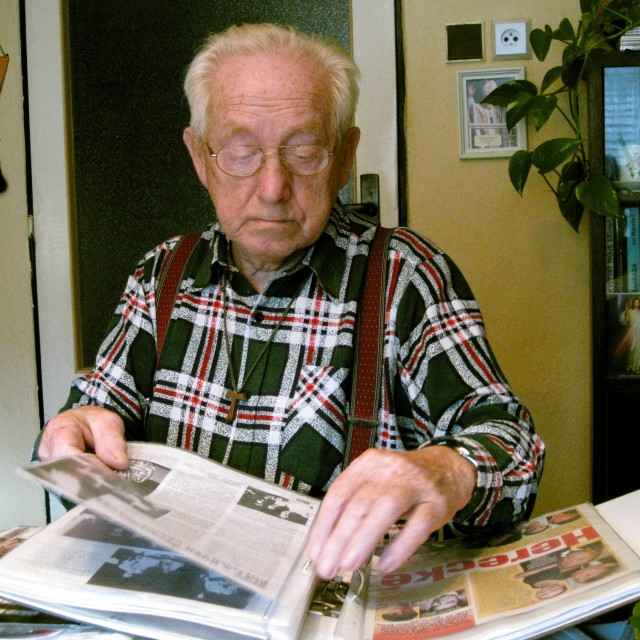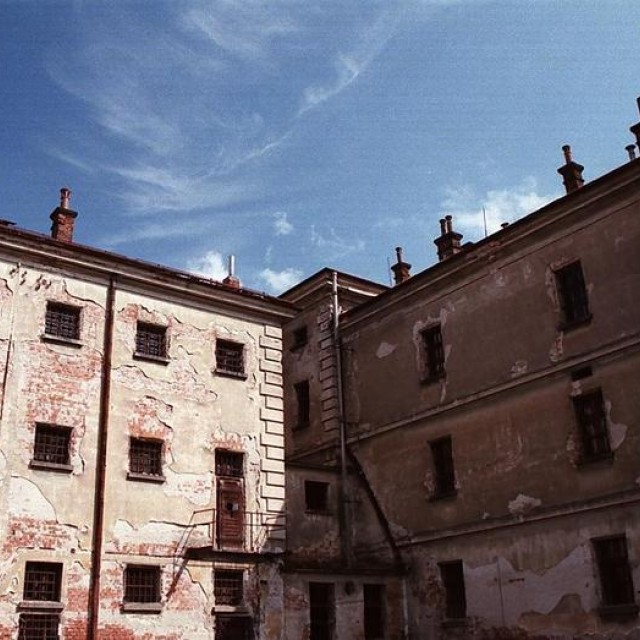Grebeníček’s shoes
Jan Janků was arrested in May 1949 and involved in a trial with the anti-communist resistance group “Světlana." He awaited trial in custody in Uherské Hradiště. At that time, Alois Grebeníček and Antonín Višenka, who gained notoriety for their brutality, worked as investigators at this penal facility in Uherské Hradiště. The interrogations were accompanied by massive beatings, torture, and the abuse of psychotropic substances. Right at the beginning of his internment, Jan Janků witnessed the death of two members of the Světlana resistance group, who had previously been brutally tortured. Jan recalls the beginnings of Grebeníček’s era in the Uherské Hradiště prison, in particular a sadistic method of investigation used by Alois Grebeníček, that the inmates nicknamed “Grebeníček’s shoes.” It was a special shoe that was wired and the inmate wearing the shoe was subjected to torture by electric shocks. Jan Janků recalls: “One prisoner once managed to rip out the metal strip that was embedded in the shoe. Grebeníček said ‘we do have a remedy for this’. He duct-taped the strip to the shoe so that it became impossible to rip it out again.”
Hodnocení
Hodnotilo 0 lidí
Trasy
Příběh není součastí žádné trasy.
Komentáře
- Radomír Silber
2019-02-11 09:01:23 - Tvrzení Jana Janků, že elektrické zařízení k mučení vězňů inicioval a používal A. Grebeníček neodpovídá skutečnosti. Dle spolehlivých pramenů, které má k dispozici také ÚSTR, inicioval vznik, výrobu a použití tohoto zařízení velitel L. Hlavačka, který ukládal a umožňoval používání tohoto zařízení při výsleších vězňů úzké skupině "svých" lidí. Mezi ně A. Grebeníček, který s ním byl ve sporu, nepatřil. J. Janků nebyl v takzvaném vsetínském procesu odsouzen na doživotí, ale přímo na 20 let odnětí svobody. Podle Ústavem pro studium totalitních režimů publikovaného životopisu Jana janků je tvrzení Jana Janků o tom, že by Jana Janků vyslýchal A. Grebeníček mylné. Neodpovídá ani skutečnosti tvrzení Jana Janků, že by byl svědkem ubití A. Pohůnka a ani tvrzení, že by přišel do cely po A. Pohůnkovi těsně poté co A. Pohůnek zemřel. ÚSTR publikoval na https://www.ustrcr.cz/uvod/vzdelavaci-projekt-pamet-a-dejiny-totalitnich-rezimu/pametnici-protikomunistickeho-odboje-a-odporu/jan-janku/ informaci, že Jan Janků A. Grebeníčka "však osobně nezažil".








